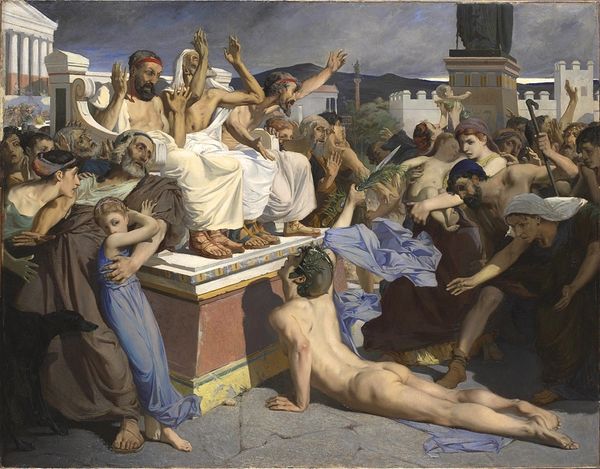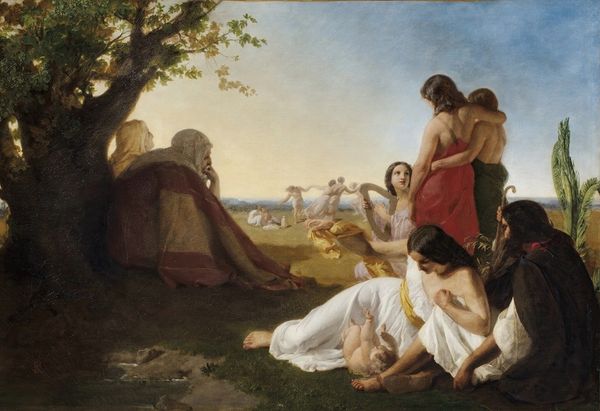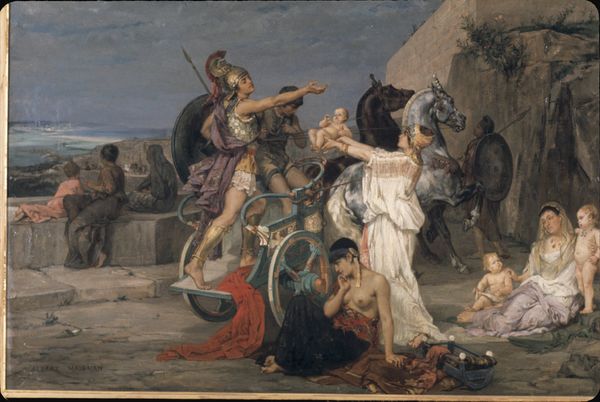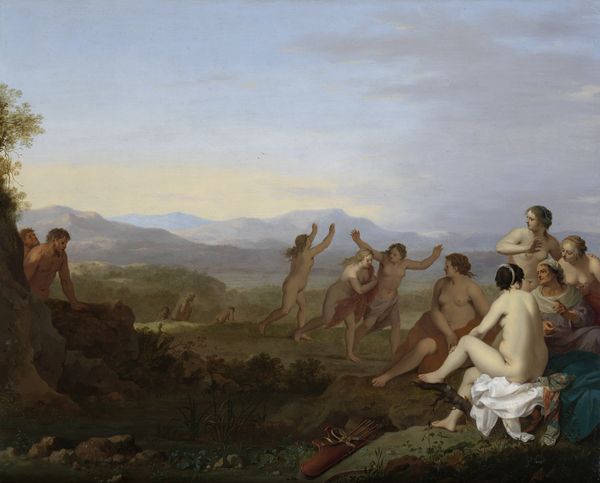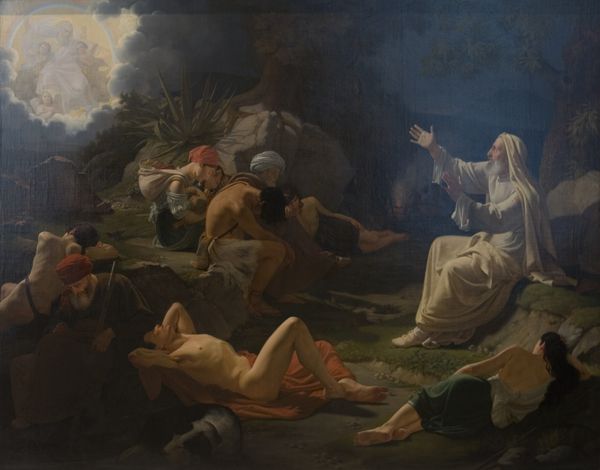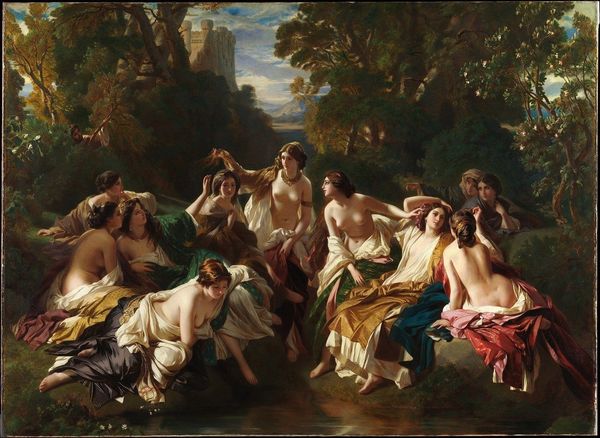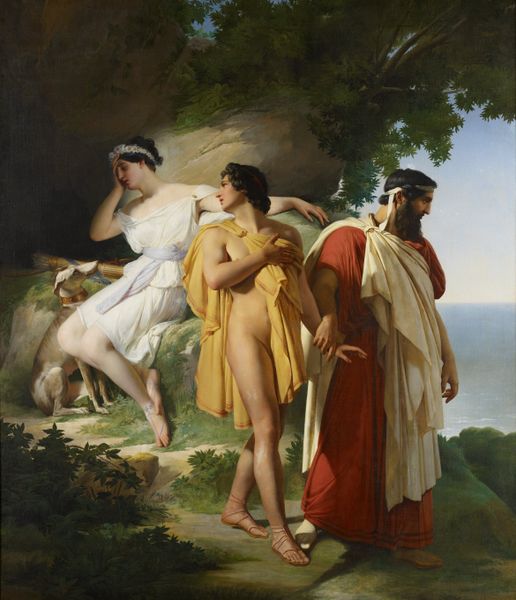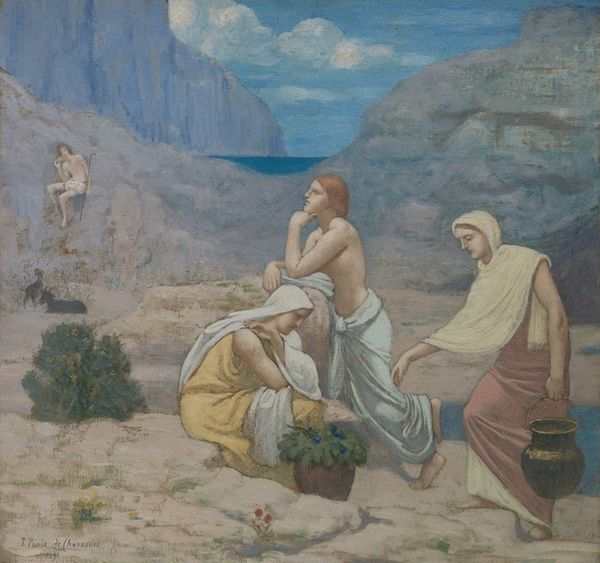
Copyright: Public domain
Curator: Edouard Debat-Ponsan created this powerful canvas, entitled “The Daughter of Jephthah,” in 1876. It’s a painting executed in oil on canvas. Editor: My immediate impression is one of subdued sorrow. The paleness of the figures' robes, the downcast gazes... It all converges toward a melancholic unity. Curator: Indeed. The figures represent Jephthah's daughter and her companions lamenting her fate. Jephthah, a judge of Israel, made a vow that, if victorious in battle, he would sacrifice the first thing he saw upon his return. Tragically, it was his own daughter. Editor: The composition emphasizes this impending tragedy. The figures are arranged in a frieze-like manner, but with a dynamic, almost collapsing rhythm toward the foreground. Note how Debat-Ponsan utilizes light to draw attention to the central figure's distraught pose, effectively narrating her emotional collapse and imminent sacrifice. Curator: From a historical perspective, it’s fascinating to consider this work within the context of 19th-century French art. History painting had become a battleground for competing ideologies, with artists using historical or mythological subjects to comment on contemporary society. How do you think it played for its contemporary audience? Editor: "The Daughter of Jephthah" surely tapped into the fascination with exoticism and the Orient that gripped Europe at the time. Also the diverse portrayals of women in attitudes of mourning underscores the importance of women's roles in society and domestic life as guardians of tradition and feeling, central to the romanticism style. Curator: But isn’t it fair to ask what purpose the overt displays of such sentiments serve? What were viewers encouraged to do with their horror? Editor: Perhaps Debat-Ponsan intended the image to elicit contemplation and trigger social commentary regarding the value placed upon human life. Curator: A point well taken. The somber tones, meticulous detailing of fabrics, and dramatic rendering of grief contribute to an overwhelmingly affecting visual experience. It truly speaks to the heart. Editor: I am in agreement. In contemplating this canvas and considering both its structural artistry and historical framework, the power of human expression across mediums makes an affecting whole.
Comments
No comments
Be the first to comment and join the conversation on the ultimate creative platform.


